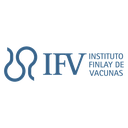Executive Secretary

VIII International Symposium on Chemistry and Pharmaceutical Sciences
SICF
VIII Symposium "Design, Obtaining and Development of Drugs"
Abstract
Introduction
The environmental training of a professional must be adapted to the needs of students and the demands of the professional model, focused on the specific environmental needs of each country and region.
Objective
The objective of the research was to design a strategy for Bachelor´s degree in Pharmaceutical Sciences at the “Marta Abreu” Central University of Las Villas, Cuba, applicable to Study Plan E.
Materials and Methods
To do this, we proceeded to refer to the consideration according to international literature; to carry out a critical analysis of the preceding curricular strategy; execute it and declare objectives, actions and expected results.
Results and Discussion
Twenty-six common deficiencies were identified in the conception of this type of strategy according to the scientific literature consulted. The training needs were determined according to survey carried out on 80% of the student enrollment, with the participation of all academic years and the criteria of 100% of the available professors of the faculty were compiled. A SWOT matrix was prepared to identify the deficiencies, threats, strengths and opportunities in the career. Lastly, objectives, actions and expected results were defined for each academic year with a curricular and extracurricular focus, basically aimed at risk analysis and management of drug residues in the environment. In addition, tasks were included in the Social Pharmacy Student Working Group.
Conclusion
A work methodology applicable to any Higher Education Center is proposed to design its own effective Environmental Training Strategy.
Resumen
Introducción
La formación ambientalista de un profesional debe adecuarse a las necesidades de los estudiantes y a las exigencias del modelo del profesional, enfocadas en las necesidades ambientales concretas de cada país y región.
Objetivo
La investigación tuvo como objetivo diseñar una estrategia para la carrera Licenciatura en Ciencias Farmacéuticas en la Universidad Central "Marta Abreu" de Las Villas, Cuba, aplicable al Plan E de Estudio.
Materiales y Métodos
Para ello se procedió a referir consideraciones según la literatura internacional, para realizar un análisis crítico de la estrategia curricular precedente; ejecutarlo y declarar objetivos, acciones y resultados esperados.
Resultados y Discusión
Se identificaron 26 deficiencias comunes en la concepción de este tipo de estrategia según la literatura científica consultada. Se determinaron las necesidades de formación según encuesta realizada al 80% de la matrícula estudiantil, con participación de todos los años académicos y se recopilaron los criterios del 100% de los profesores disponibles del claustro. Se elaboró una matriz DAFO para identificar las deficiencias, amenazas, fortalezas y oportunidades en la Carrera. Por último, se definieron, para cada año académico, objetivos, acciones y resultados esperados con un enfoque curricular y extracurricular, dirigidos básicamente al análisis de riesgo y gestión de residuos de medicamentos en el ambiente. Además, se incluyeron tareas en el Grupo de Trabajo Científico Estudiantil Farmacia Social.
Conclusión
Se propone una metodología de trabajo aplicable a cualquier Centro de Estudios Superiores para diseñar su propia Estrategia de Formación Ambiental efectiva.
About The Speaker

Daymí Isabel Carrazana García

Graduado de Licenciada en Ciencias Farmacéuticas, 1990: Universidad Central “Marta Abreu de Las Villas, (UCLV), Cuba. Ingeniera Agrónoma, 2007: UCLV, Cuba. Master en Ciencia y Tecnología de los Procesos Biotecnológicos (1998). Doctora en Ciencias Agrícolas (2008).
Institución en la que labora: UCLV (1991-2025). Profesora Titular. Departamento de Farmacia.
Experiencia docente: Profesora de Microbiología y Biotecnología en las carreras de Licenciatura en Ciencias Farmacéuticas (1991-2025) y Licenciatura en Biología (2006-2014). Tutora de 40 Trabajos de Diploma en ambas carreras. Profesora de Riesgo y Gestión Ambiental, Biotecnología Farmacéutica, Biotecnología Vegetal y Microbiología aplicada en las Maestrías Desarrollo de medicamentos, Práctica Farmacéutica, Ingeniería Ambiental y Agricultura sostenible. Líneas de investigación más importantes en las que ha participado: Contaminantes microbianos en el cultivo de tejidos vegetales; Impacto ambiental y sobre la salud humana de los agentes biológicos causantes de biodeterioro; Análisis de riesgo de residuos de químicos en el ambiente; Contaminación ambiental por residuos sólidos (plásticos); Educación ambiental.
Discussion




